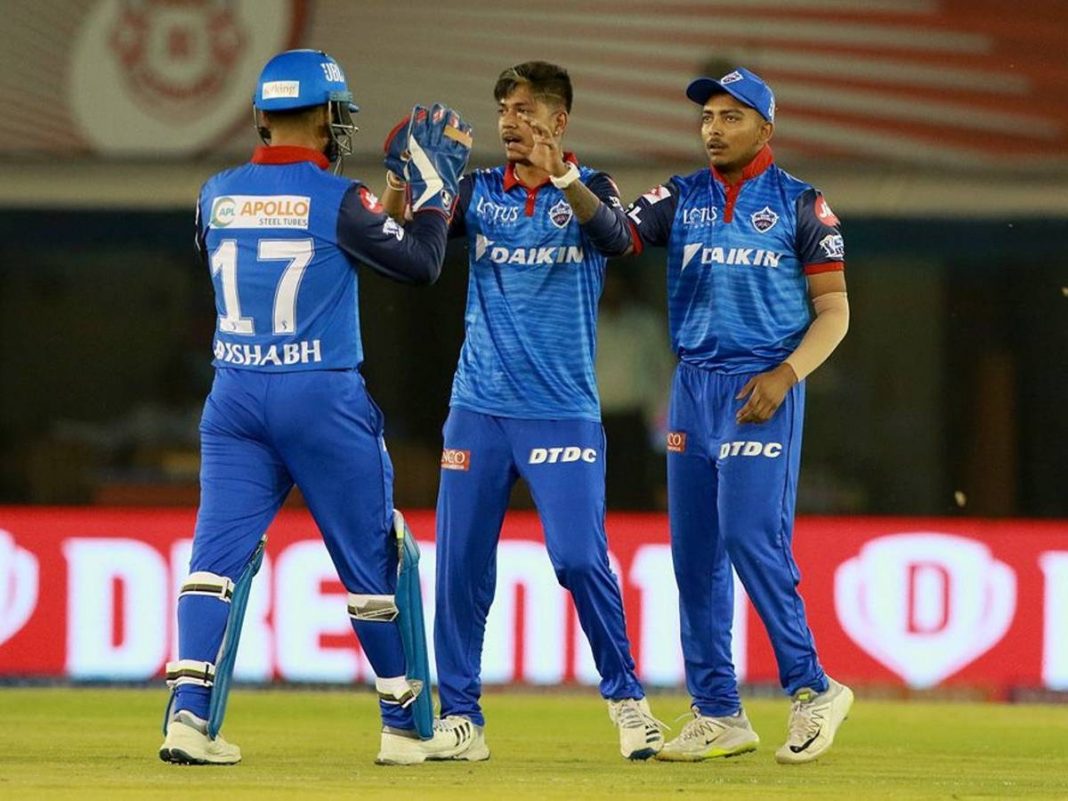In the last month, there has been a seismic shift in the balance of power between those who run cricket. Four events exemplifiy this power shift:
- It was revealed by several major media outlets that the IPL would get a longer 2 ½ month window in the cricket calendar, restricting the time allocated for international cricket. It was also implied that Cricket Australia and the ECB would create windows in their own calendars for the BBL and The Hundred respectively.
- Cricket South Africa abandoned their ODI Super League series in Australia scheduled for January 2023, accepting a forfeit and jeopardising their route to the 2023 World Cup, in order to launch their own franchise T20 league at the same time.
- All 6 franchises in CSA’s T20 League were sold to owners of existing IPL franchises.
- Ben Stokes announced his retirement from ODI cricket to focus on Test Cricket and T20.
Each of these alone may not appear catastrophic, but the four together paint a clear picture: International cricket is losing its status as the pinnacle of the game, and franchise T20 is taking its place. Cricket has a new power structure, and with it, a new world order.
Who are cricket’s new world order?
In short, cricket’s new world order is a collection of private enterprises that own the ten existing IPL franchises. The ever-increasing financial clout of the IPL gives these figures significant power, but their power is growing beyond the reaches of the IPL. Many of these enterprises not only own an IPL franchise, but also own franchises in several other leagues, including the CPL and the upcoming UAE and South African T20 leagues.
This group is, in effect, an oligarchy – a small group of individuals who gain power through the financial acquisition of assets. The more they own, the more powerful they become. Collectively, their power is significant, and the events of the last month may represent a tipping point as cricket’s priorities shift away from international fixtures and centrally run domestic tournaments, and towards privately owned franchise leagues. As more leagues appear, and their financial value increases, there becomes more teams to be owned, more money to be made, and more power to be gained.
What of cricket’s ‘old world order’?
It is no secret that the power of the ICC itself is very limited, and that full member boards have held the balance of power in recent times. This has been most concentrated in the BCCI, and to a lesser extent the ECB and CA.
As the power of the Franchise Oligarchy grows, the power of the national boards, both collectively and individually, shrinks. The smallest full members will lose their power first, but over time, the larger boards will see their power diminish too.
Any that thrive will be those that can exploit their own market. Whilst it may be appealing to turn to the free market and franchise cricket in search of more money, it can be a dangerous game. The Pakistan Cricket Board has already lost its battle with the franchise owners in the PSL, and had to accept a much reduced share of the generated revenue from the league. For the ECB, CA, and New Zealand Cricket, whose T20 leagues are centrally run, the prospect of selling their teams to the free market in exchange for a short term cash boost may be appealing. However, selling both diminishes their political power in their domestic market, as well as their long term ability to make money from the league.
Even the mighty BCCI is threatened by cricket’s new world order. Whilst their financial clout and that of the IPL will certainly keep them relevant in the short term, a decline in the value and status of international cricket hurt them in the long term. As their ability to make money from revenue streams outside the IPL diminishes, so will their power over the IPL franchise owners. And as other leagues where the Franchise Oligarchy owns a stake increase in value, their dependence on the IPL and therefore the BCCI will decrease. In time, the franchise oligarchy will begin to publicly question why the BCCI takes such a large share of the IPL proceeds, for what is essentially an administrative role, and demand a greater share for themselves. The BCCI will have little choice but to comply.
What happens next?
The growth in the value of franchise T20 means that in the short term, there will be more leagues, they will be longer and take up greater space in cricket’s schedule. We’re yet to see the 2023-27 ICC Future Tours Programme (FTP), however, it is unlikely that it will contain less international cricket. The short-term impact is that the calendar will become oversaturated with cricket, which will increase the workload facing the players. This will lead to more players putting club before country to maximise their earnings, or strategically retiring from one or more formats to reduce physical and mental strain. The long-term impacts are that we will simply have to accept less international cricket.
More domestic and less international cricket is a significant departure from cricket’s old world order where international cricket was the pinnacle. And with India representing such a major share of the market, cricket’s restructuring puts itself on course to align itself with American sports, such as baseball, in its global structure. In such a case, the IPL becomes cricket’s mirror to the MLB, attracting the world’s top talent to a much larger and longer running league, the centrepiece of the game. The IPL would top a pyramid, with smaller regional competitions and the Syed Mushtaq Ali Trophy acting as ‘Minor League’ style feeder tournaments. Professional leagues in cricket’s other larger markets would likely continue, but would be dwarfed by the IPL, and would likely only act as feeder leagues. Little, if any, international cricket would be played outside World Cups, and these may not even attract the game’s top talent.
This is one possible scenario, but there are others, both better and worse for international cricket. A best-case scenario sees cricket’s old- and new-world orders agree to a balance between club and country, with fixed international and domestic windows like Rugby Union. A worst-case scenario sees the international game die out and the professional game shrink into South Asia alone, in a mirror to American Football and the NFL. All scenarios will inevitably involve less international cricket.
What does this mean for international cricket?
The longevity of the international game must be considered. ODI cricket is in the most fragile position, reflected by the abandonment of South Africa’s World Cup qualifiers in Australia, and Ben Stokes’ retirement from the format. Cricket’s unloved middle child does not have the financial clout of its younger sibling, nor does it have the prestige and gravitas of its elder sibling. Although it has its own distinct appeal, it is the format most likely to be cut or abandoned entirely in the near future. The ICC has priced in five ODI events over the next ten years, but whether the game continues at a professional level after the 2031 ODI World Cup final is by no means certain.
Test Cricket too has an uncertain future. A three-match test series takes a month, a five-match series no fewer than 6 weeks. Finding these gaps in an increasingly crowded calendar will be difficult, and it is likely that test series will be shorter in future. But this is not the only threat to the game, Test cricket is run at a loss by all but the largest cricket boards. Although the game is typically subsidised by other revenue streams such as ICC grants, these streams may not be reliable as the franchise game comes to dominate. Without an active remedy, Test Cricket will become unsustainable for more nations in the long term.
To top it off, the skill sets required by Test and T20 cricket are increasingly diverse and are approaching separate sports, particularly if ODI cricket fades away. Except for an elite few, players will be forced to chose to specialise in their preferred format sooner. Though some will pick the prestige of the test game, many will choose the earning potential of T20. To sustain both formats will require a larger number of professional players, which many will not be able to afford.
T20I is the healthiest of the three, but will face challenges of its own, particularly in competing with an ever-larger volume of private T20 leagues. With over 100 members with T20I status, the format remains the best growth tool for cricket, but needs a clearer purpose at the highest level.
What does this mean for associate cricket?
With very few exceptions, the increased power of free market forces is bad news for cricket’s smaller markets. An ICC with less power and less money to spend has the most immediate impact, in that associate members will likely see their ICC grant – which is the primary revenue stream of nearly all associate members – reduce in the coming years. A financially weaker ICC is also likely to spend less on development programmes and pathway tournaments, which will disproportionately impact women’s and junior cricket in associate nations.
As the Franchise Oligarchy comes to power, many will turn to the game’s new paymasters in the hope that they have a positive attitude to growing the game. Some may take a benevolent view, and actively work to grow the game by setting up academies and scouting networks in emerging markets. However, no-one should rely on this outcome. As private enterprises, none have any formal responsibility to the globalisation of the game, and the associate game will be likely be poorer for it overall.
The nature of the free market is that money goes where there is money to be made. If there is a sufficiently large market for cricket, investment will follow. This is likely to exclude most associates, but might be beneficial for the likes of Nepal and the USA, who have significant potential markets that could be developed and invested in. Working together with neighbours to offer a combined market may also be a solution for the higher profile associates. Although the lessons of the GT20 Canada and Euro T20 Slam should be heeded, the potential of multi-domestic leagues should not be undervalued in an era where international cricket cannot be relied upon.
What can be done to grow the game and maintain balance?
Despite the bleak and uncertain future, there is plenty that can be done to grow and develop the game in new markets and maintain the relevance of international cricket.
Most importantly, but perhaps counterintuitively, is for the ICC to recognise that it cannot overcome the free market forces taking control of the game, and to accept a new-but-diminished role as a regulator and as a philanthropic organisation. There will need to be significantly less men’s international cricket among full members, in all three formats. The ICC will need to give the maximum possible context and importance to what reamains.
This means waving goodbye to bilateral series if they don’t form part of an international championship. If Test and ODI cricket do have a long-term future, the only fixtures that will be worthwhile will be part of the World Test Championship and as part of ODI World Cup qualifying. Both, however, will need to be much condensed so that they take up minimal time in the calendar to maximise player ability. The ICC may be able to enforce several international windows where private tournaments don’t take place to facilitate this. However, long test series may still be unviable in a condensed international calendar.
Although it would certainly be controversial, there may be wisdom in the ICC deliberately sacrificing a format of the game to focus on preserving the relevance of the others. It would certainly be easier to tend to the needs of one or two formats if the ICC is working with fewer resources. A case could be made to preserve each format, but this scenario would likely see ODI cricket formally abandoned at the end of the next ICC rights cycle in 2031.
The ICC also need as significant change in attitude with regards to membership. In an era where international cricket has decreased value, the exclusive and self-protecting circle that is full membership is increasingly out of place. A single membership level for all members would help make cricket more democratic, alongside an independent executive which would put the interests of the global game ahead of competing national interests.
A change in how ICC distributes its revenue could also benefit the international game. The “who is worth what” debate that currently defines the ICC grant distribution looks increasingly outdated when boards are free to generate significantly more money through other measures. Instead, the ICC should be viewed as cricket’s government and its revenue distribution equivalent to tax and spend. The ICC should keep a much greater cut of its money for development programmes, pathway events and to improve the quality of their streaming service. The rest should be divided equally among all members. Whilst some may take a financial hit, the opportunities for small members to develop more players would make more teams competitive, which could help sustain the appeal of international cricket.
More so than ever, cricket needs the Olympic Games. Including T20 at LA 2028 would have a transformative effect on the game, unlocking significant extra funding from national governments, which would decrease reliance on diminishing ICC grants and philanthropy. The Olympics may also add a little extra gravitas to T20I, and make the game visible in more markets.
Outlook
The outlook is bleak, and the clock is ticking. The longer the Franchise Oligarchy has to gain momentum, the harder it will be to control. To save international cricket, the old world order must quickly recognise the elephant in the room. To grow the game in cricket’s new world order, radical action is required imminently.
You’re reading Emerging Cricket — brought to you by a passionate group of volunteers with a vision for cricket to be a truly global sport, and a mission to inspire passion to grow the game.
Be sure to check out our homepage for all the latest news, please subscribe for regular updates, and follow EC on Twitter, Facebook, LinkedIn and YouTube.
Don’t know where to start? Check out our features list, country profiles, and subscribe to our podcast.
Support us from US$2 a month — and get exclusive benefits, by becoming an EC Patron.








Useful Info Post!
As ICC programs less the international cricket participation of India is notable one !
By the Indian economy skyrocketed and Indian television quickly grown and produced commercially itself.
But Indian cricket created a new, more broadcast-friendly league,
Each of these developments bolstered the ICC’s commercialization
providing greater leverages….
https://proteammaker.com/
Reading this article, it is more pertinent than ever for lesser nations such as Ireland, Nepal and the Netherlands to put most of their eggs into getting their players in as many T20 franchise leagues as possible.
The scrapping of the Intercontinental Cup, the reduction of the 50-over World Cup to ten teams, the formulation of the Big 3 and much more should tell them that international cricket should not be their priority. Instead, they should ensure their players get into the IPL, the Big Bash, CPL, and other leagues for their development.
Afghanistan have become dark horses in every 50-over or T20 World Cup they play in because of the amount of franchise cricket they play, not international tours to India, England or Australia.
Other such nations should take note. Seeing the Zimbabwe coach Dave Houghton or Paul Van Meekaran begging for a big team or two to stop over before or after their tours to England or Soth Africa should show how bad international bilateral cricket is as a smaller team.
They should shift their eggs to mainly franchise cricket as soon as possible. That’s where the wind is blowing, and they should hop on while it’s early.